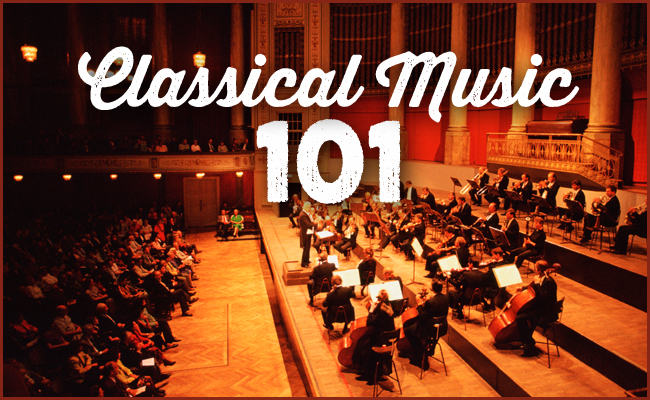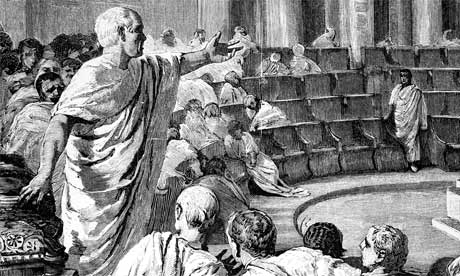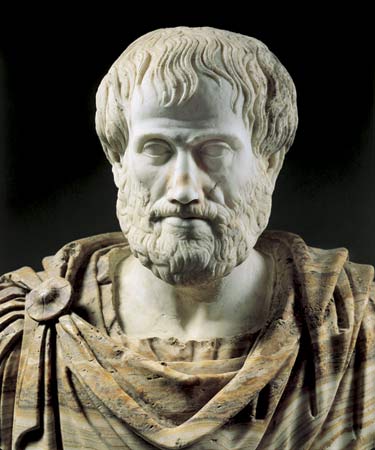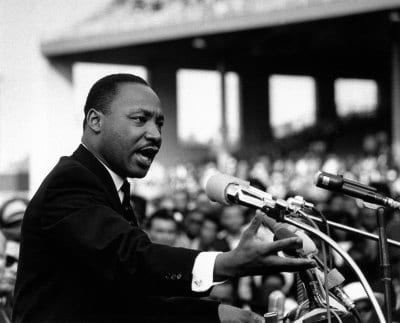
Welcome back to our series, Classical Music 101! Our goal with this series is to provide an approachable, non-intimidating introduction to classical music so you can start appreciating this timeless musical genre.
In our last article, we explored the passionate and expressive music of the Romantic era, in which composers like Tchaikovsky and Wagner infused their music with personality and emotional intensity. Today, in the final installment of our series, we’ll venture into the Modern era — a period of radical reinvention of Western orchestral music.
The Modern Era (1900-Today)
The Modern era began around 1900 and continues today. It’s marked by composers’ growing desire to break free from traditional and formal musical rules and standards. The driver? A world changing at breakneck speed.
The turn of the 20th century saw unprecedented technological and scientific breakthroughs, including the first automatic telephone switchboards, magnetic recordings of sound, heavier-than-air flights, automobiles, and X-rays. Albert Einstein, Sigmund Freud, and Max Planck were revolutionizing how we understood the universe and human consciousness itself.
At the same time, Western societies, which were becoming more and more pluralistic, increasingly questioned the idea of absolute truth and the legitimacy of dominant norms.
Modern-era musicians paralleled the frenzied pace of this technological and social change by creating new and different types of music. In previous musical eras, changes in composition and style would take a century to develop; in the 20th century, new music genres were birthed in only a decade’s time. The list of musical genres that arose in the Modern era includes expressionism, serialism, neoclassicism, experimentalism, minimalism, and post-Modernism. There’s even a genre called post-post-Modernism. Which is very post-modern.
The rise of individualism that took place in the Romantic era marched on unabated during the Modern. Artists sought to distinguish themselves from the pack by creating music infused with originality. But unlike the Romantic era musicians who channeled their individuality through the structures of musical tradition, Modern era composers rejected such constraints. For that reason, music scholar Jan Swafford describes the Modern period as “the Romantic era without brakes.”
Characteristics of Modernist Music
Because the Modern era is made up of different sub-eras, it’s probably more helpful to discuss the characteristics of each of these sub-eras instead of attempting to describe the characteristics of the Modern era as a whole.
Post-Romanticism and Impressionism (1900-1920)
In the final echoes of Romanticism, composers stretched traditional tonality — the organization of music around a central pitch or key — to its limits and often infused their music with intense emotional themes. Gustav Mahler’s Symphony No. 9, which grapples with mortality and existential reflection, is emblematic of this era. Gustav uses a lot of chromaticism in the piece, which just means he adds more notes to a traditional scale. It gives the music a bit more texture. You’ll also see him start stretching the limits of Romantic tonality, while not going into full-on atonality (music that isn’t organized around a central pitch).
Take a listen:
Running parallel to Post-Romanticism was the Impressionist movement, which emerged in the late 19th century and focused on evoking atmosphere and mood. Inspired by the visual arts, composers like Claude Debussy and Maurice Ravel used nontraditional harmonies, modal scales, and exotic influences to create music that painted vivid sonic landscapes. Works such as Debussy’s Clair de Lune and Prélude à l’après-midi d’un faune exemplify this style, with their dreamlike textures and subtle dynamics.
Take a listen to Clair de Lune. If you’ve seen Oceans 11, you’ll recognize it:
Expressionism and Serialism (1910s-1940s)
During this period, led by Arnold Schoenberg and his students Alban Berg and Anton Webern, music underwent a revolutionary departure from traditional tonality. Expressionist works, such as Schoenberg’s Pierrot Lunaire used atonality to convey intense psychological states. Later, Schoenberg pioneered the twelve-tone technique, an approach to composition that became a cornerstone of serialism. Serialism is a way of composing music where the composer follows a strict system to decide what notes, rhythms, or dynamics to use instead of just going with what sounds good or traditional. Think of it like creating a playlist, but you’re not allowed to repeat a song until every track has been played once — and you have to play them in a specific order.
Serial music often sounds very organized but can also feel unpredictable or strange because it doesn’t follow the usual patterns of “happy” major keys or “sad” minor keys.
While serialism marked a radical formal innovation, expressionism was primarily an aesthetic movement emphasizing emotional and psychological depth.
Here’s Schoenberg’s Suite for Piano, Op. 2, a serialist piece:
And here’s his Pierrot Lunaire, an example of expressionism:
Neoclassicism and Experimentalism (1940s-1960s)
Neoclassicism emerged as a response to the perceived excesses of Romanticism and modernism, with composers like Igor Stravinsky revisiting older forms and styles while infusing them with modern harmonic and rhythmic innovations. Works such as Pulcinella and Symphony of Psalms reflect this synthesis of tradition and modernity.
Here’s Symphony of Psalms by Igor Stravinsky:
At the same time, experimental composers such as John Cage introduced chance (aleatoric) techniques like flipping coins and rolling dice to make musical decisions, challenging traditional notions of authorship. Cage’s most well-known and controversial work is 4’33” in which performers don’t play any music and just sit in silence for four minutes and thirty-three seconds. He also used a technique called “prepared piano,” where objects like screws, bolts, and rubber balls are placed between the piano strings, altering the instrument’s sound to produce percussive and otherworldly timbres.
Here’s John Cage’s Sonata V with a prepared piano. Sounds weird:
Minimalism and Post-Modernism (1960s-Present)
Minimalism emerged as a reaction against the complexity of serialism and avant-garde music and emphasized simplicity, repetition, and gradual transformation. Composers like Philip Glass, Steve Reich, and Terry Riley used repetitive structures and patterns to create meditative and hypnotic effects.
Here’s Glass’ “Echorus,” a great example of meditative minimalism:
Post-modernism, by contrast, is broader and more eclectic, rejecting rigid stylistic boundaries in favor of pluralism. It often incorporates elements of popular music, historical pastiche, and cross-cultural influences, creating a tapestry of diverse musical expressions.
For an example of post-modernist music, take a listen to John Adams’ Short Ride in a Fast Machine:
George Rochberg’s String Quartet No. 3 is an example of post-modern music that uses a pastiche-approach to borrowing historical styles and remixing them into something new:
Conclusion
Well, there you go. A journey through nearly 2,000 years of Western music, from ancient Greek chants to modern experimental compositions, in fewer than 10,000 words.
When I started this series, I mentioned that I used to listen to classical music while doing homework because it made me feel “studious.” Now, after diving deep into the history and evolution of classical music, I’ve developed a deeper appreciation for it. It’s made listening to classical music much more enjoyable. My hope is that this series has done the same for you.
Classical Music 101 is now dismissed. Happy listening!
Read the rest of the series:





